Today we’re going to talk about which flowers represent the death of a loved one, as well as flowers that symbolize life, grief, mourning, and remembrance.
Flowers have a rich tradition of use at central life events. Whether congratulations for a birth or condolences at a funeral, flowers are always appropriate and convey a deep sense of importance and significance.
We asked Juan Palacio, CEO and founder of the popular flower subscription service BloomsyBox, about the symbolism and etiquette for funeral flowers.
Here is everything you need to know about the meanings of different types and colors of flowers, including flowers that represent death, peace, everlasting love, and much more.
Our website is supported by our users. We sometimes earn a commission when you click through the affiliate links on our website. See our privacy policy & disclosures for more information.
Funeral Flower Meanings
In the United States, many types of flowers can be given as a remembrance.
“Different flowers carry different symbolic meanings, and these can be particularly poignant in funerals and sympathy bouquets,” Palacio says. He listed lilies, roses, carnations, and orchids as among the most commonly given for funerals.
Yet even in the same type of flower, the different colors can convey additional symbolism. Palacio noted that, “Depending on their color, roses can denote different meanings. Red roses typically symbolize respect, love, and courage, while yellow
roses are often used to symbolize friendship.”
Once you know the symbolic meaning of each flower, you’ll be able to choose the perfect arrangement for a funeral, memorial service, celebration of life, or to send as a sympathy gift.
What Flower Represents Death?
Here are some flowers that symbolize death, loss, and grief in different cultures:
Urns Made in the USA
- Chrysanthemum
- Carnation
- Roses
- Hyacinth
- Rafflesia
- Red Spider Lily (Lycoris)
- White Lily
- Wolfsbane (Aconitum)
- Gladiolus
- Black Rose
- Marigold
- Orchids
- Poppy
- Asphodel
Funeral Flower Symbolism
Here are some of the special meanings of flowers that represent the death of a loved one.
1. Chrysanthemums
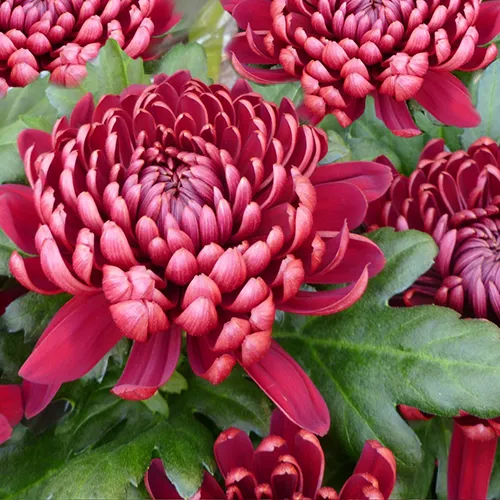
In the United States, mums symbolize truth. However, in much of Europe and in many Asian cultures, white chrysanthemums are generally used only at funerals and signify death, mourning, and grief.
2. Lilies

With its characteristic fragrant aroma, the lily flower symbolizes purity and innocence.
“Often associated with funerals, Palacio says, “lilies symbolize the restored innocence of the soul of the deceased.”
Lilies are also suggestive of the purity found in new birth and new life, which is perhaps why they are often considered the most popular flowers used for funerals.
3. Orchids

The symbolic meaning of orchids is universally recognized: Enduring, everlasting love. These gorgeous and unique flowers come in a vast array of colors, each with additional “sub” meanings:
- White: Innocence, beauty, elegance.
- Pink: Grace, femininity, innocence.
- Purple: Dignity, respect, royalty.
- Yellow: Friendship, new beginnings, happiness.
- Red: Love, passion, courage.
4. Roses
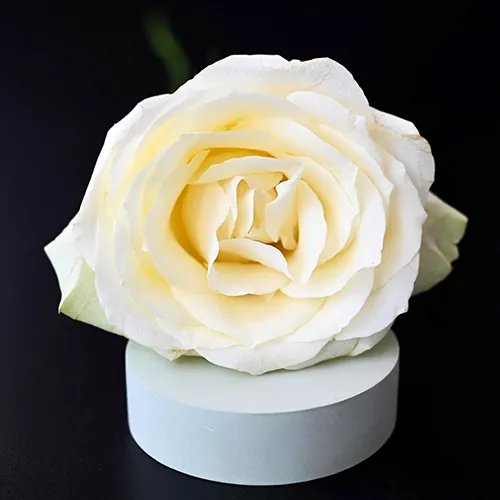
Perhaps the only funeral flower with a more commonly recognized meaning than orchids, roses symbolize love. For the various colors and their meanings, see the colors listed for the orchid above.
White roses are the most common at funerals, but one additional color is often also associated with memorializing a loved one: Crimson roses represent grief, sadness, and mourning, with additional symbolic meanings of rebirth and renewed love.
5. Forget-Me-Nots

As their name implies, forget-me-nots signify faithful love, memories, and remembrance. At funerals, the forget-me-not flower conveys a message of abiding love for the deceased, and that they will always remain and live on in your memories.
6. Lilacs
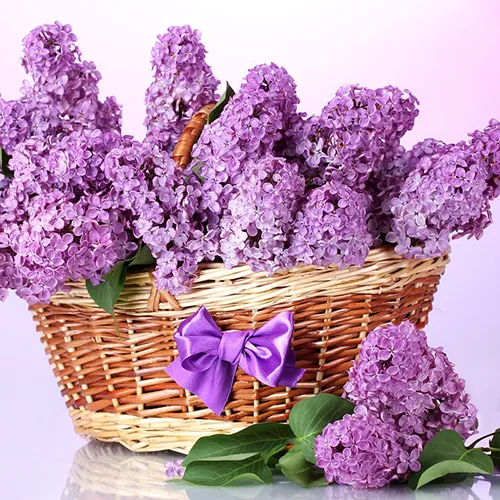
White lilacs are often used at funerals to represent youth and innocence. Thus, the lilac is popular for use at a young person’s funeral, or as a memorial tribute to one known and beloved for their good heart or childlike nature.
7. Carnations
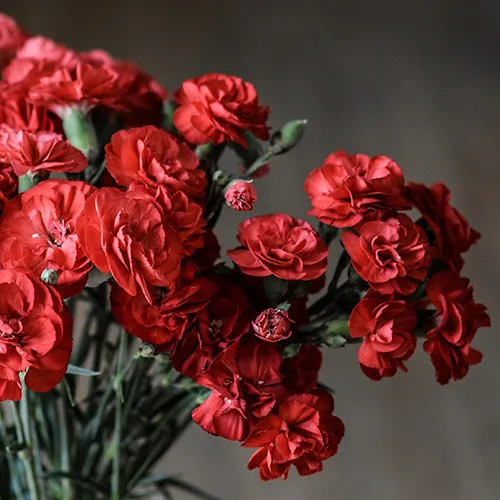
Often used in funeral wreaths, carnations come in a variety of colors. Palacio noted that red carnations depict admiration, and white connotes innocence and pure love. Lastly, pink carnations often convey the idea of remembrance.
8. Tulips

Red tulips are typically used to convey perfect love, while white tulips symbolize forgiveness or worthiness. The meanings symbolized by white and red tulips make them popular for a wide variety of situations when used as funeral flowers in memory of a loved one.
9. Violets

Violet flowers, with their light airy petals in deep-hued purple, often symbolize delicacy and modesty. Not traditionally used in funerals, the violet flower nevertheless has a deeply significant history of meaning which is making a resurgence.
According to Garden Guides,
…the [violet] flower is associated with death–and resurrection. The symbolism likely springs from antiquity, when a number of myths featured violets in the death of heroes and even an Earth God named Attis.
Combining this death symbolism with modesty and maidenhood creates a meaning for violet of death too soon. Shakespeare’s tragic Ophelia was linked to violets in “Hamlet.
10. Gladioli

The gladiolus flower conveys moral integrity, the strength of character, faithfulness, and, significantly for funerals, remembrance.
11. Camellia
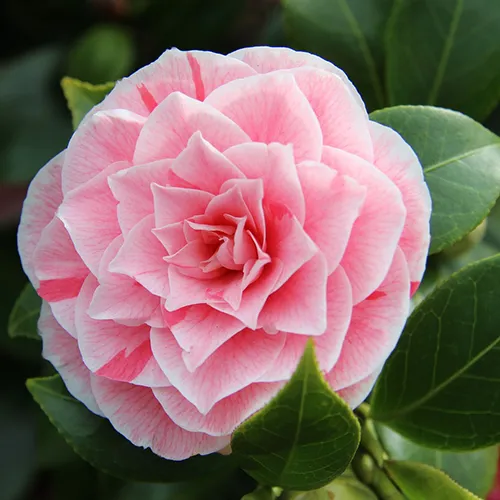
The delicate petals of the camellia flower represent deep longing, perfection, and excellence. Also used to evoke longing, gratitude, and refinement.
12. Hyacinths
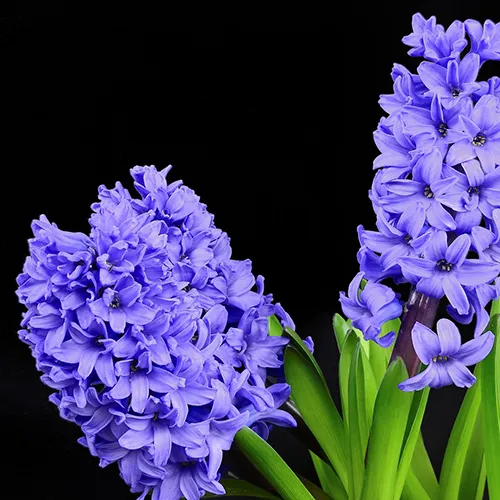
Hyacinth flowers are used at funerals to add a sweet fragrance to the flower arrangement. When used in this way, hyacinths represent deep sorrow.
The origin of this meaning traces back to ancient Greek mythology.
Apollo (the sun god) and Zephyr (the god of the wind) both cared for a young man named Hyakinthos and competed with one another for his attention. When Apollo was teaching young Hyakinthos how to throw a discus, Zephyr became jealous and, enraged, blew the discus back with his strong wind.
Tragically, the discus hit Hyakinthos in the head and killed him. From the place where his blood soaked the ground, a beautiful purple flower grew. Grieving, Apollo named the flower “hyacinth” in honor of his departed young friend Hyakinthos.
13. Hibiscus

The hibiscus is considered a very feminine flower and is often used to symbolize femininity, a beloved wife, and delicate beauty.
Because of its prominence in several island cultures, the hibiscus can also signify an association with Hawaii or Haiti.
Etiquette for Funeral Flowers
As the owner of a flower company, Palacio has to think about the proper etiquette for funeral and sympathy flowers.
“Sympathy flowers are sent to the bereaved to express condolences and provide comfort at their home during the grieving process. They are generally smaller or medium-sized arrangements that serve as a thoughtful reminder that you are thinking of them.
“Funeral flowers, on the other hand, are larger arrangements that are displayed at the funeral service, including wreaths, standing sprays or casket sprays. These are often more formal and act as a tribute to the deceased.”
Here are his etiquette tips for sending flowers:
Respect Preferences: Always respect the wishes of the deceased’s family. If they request donations in lieu of flowers, abide by their wishes.
Timing: Send sympathy flowers as soon as you hear the news of the death. For funeral flowers, make sure they arrive before the first visiting hours begin at the funeral home or the house.
Addressing: Funeral flowers should be addressed directly to the funeral home, church, or the address where the service will be held. Sympathy flowers should be sent directly to the home of the deceased’s family.
Related: Here’s What to Send (Instead of Flowers) When Someone Dies
What flower symbolizes death?
The chrysanthemum traditionally represents the death of a loved one.
Other flowers that can symbolize death include carnations, roses, hyacinths, rafflesia, red spider lilies (lycoris), white lilies, wolfsbane (aconitum) gladiolus, marigolds, orchids, and poppies.
Do sympathy flowers have to be white?
No. Often the family will appreciate the decedent’s favorite flower, perhaps yellow daisies, purple tulips, or bold red roses.
However, white symbolizes purity, rest, and the resurrection unto life, and is the traditional color for funeral flowers. So if you are in doubt about what color to choose, we recommend white flowers for sympathy or funeral arrangements.
What’s the best flower to send for sympathy?
The best sympathy flowers will be the one that best suits the individual. This might be their favorite flower, if known, or a flower that fits their personality.
You won’t go wrong with chrysanthemums, lilies, orchids, roses, or any of the flowers on this list.
Funeral & Sympathy Flower Arrangements
Here are some of our favorite and popular funeral flower arrangements that incorporate these symbolic elements.
- Pink Roses
- White Carnations
- Peruvian Lilies
This heartfelt bouquet is filled with different flowers, such as lily flowers, carnations, and pink roses. It’s perfect to send to a funeral home.
- Three-Stem White Orchid
White orchids represent purity and enduring love, making them ideal for sympathy arrangements. Because of its elegance, this flower is a popular choice for services.
- White Roses
- Lilies
- Snapdragons
If you’re not sure which flowers to send the grieving family, this white floral arrangement is a good option.
- Red Carnations
- Orange Roses
- Yellow Roses
- Sunflowers
- Lilies
- and More
For a seasonal spring plant, this basket is filled with yellow roses, sunflowers, and vibrant lilies. What a beautiful flower arrangement!
- White Roses
- Lilies
- Mums
- Carnations
This sympathy standing basket includes white carnations and lilies with bits of blue peeking through. It’s the perfect option for funeral services you may not be able to attend.
Read Next: How to Preserve Funeral Flowers





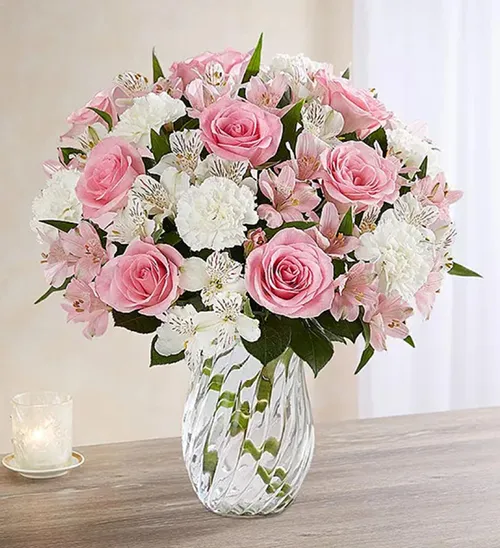
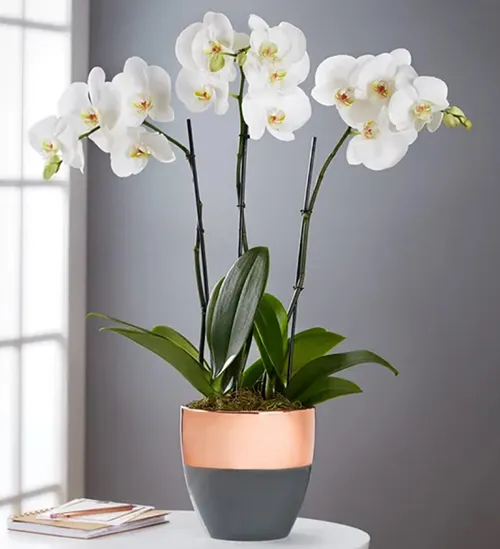

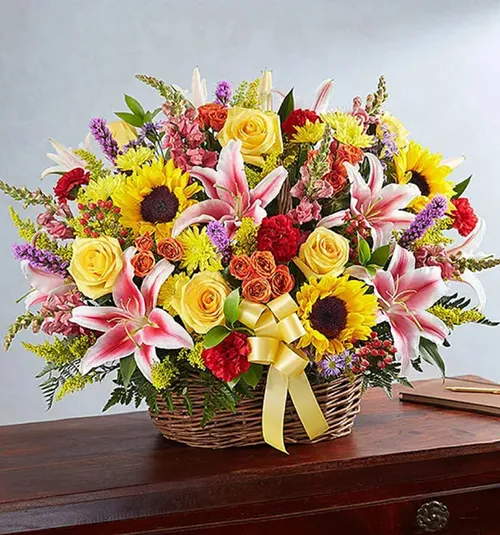
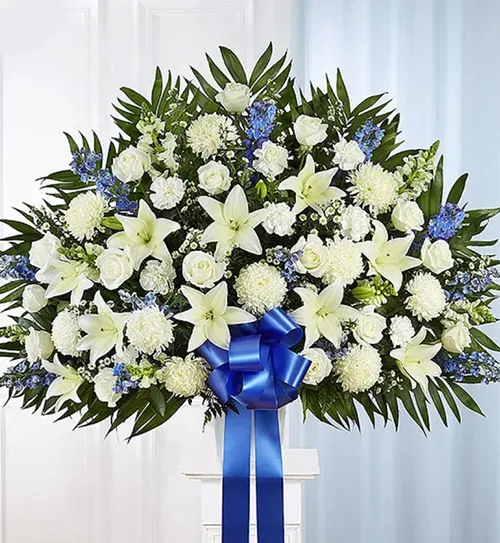

Great article , that was always problem to me.